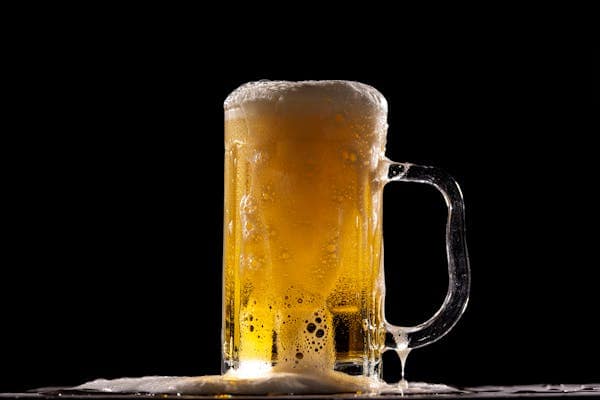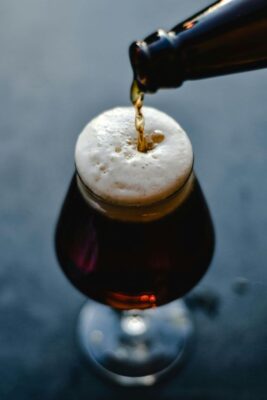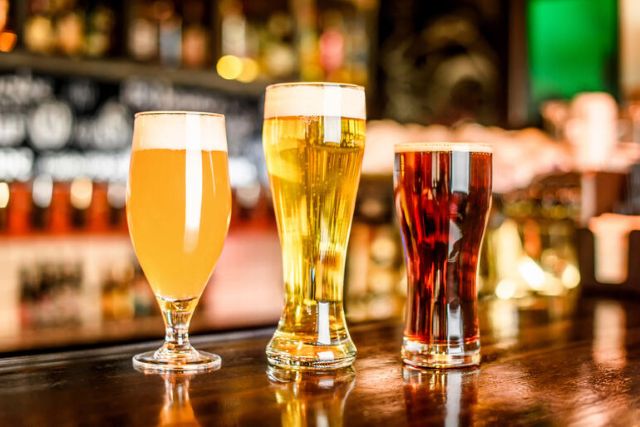The Science Behind the Beer Head and Why It Matters
The Science Behind the Beer Head and Why It Matters

Okay, you’re at your favorite taproom and the bartender slides a fresh stein your way, topped with a frothy, creamy head of foam. It’s a thing of beauty, but have you ever stopped to wonder what’s going on in that fizzy crown?
Turns out, the beer head isn’t just for show—there’s a science behind it that can make or break your drinking experience.
First off, that frothy head is all about carbonation. Beer gets its fizz from carbon dioxide (CO2), either naturally produced during fermentation or added during brewing.
When you pour a beer, the sudden release of pressure—whether from a tap, bottle, or can—lets those CO2 bubbles break free. They rush to the surface, dragging along proteins, hop compounds, and other goodies from the beer. Those proteins, mainly from malted barley, are the real MVPs here. They form a kind of scaffolding that traps the bubbles, creating that foamy layer we call the head.
But not all heads are created equal.
Ever notice how a stout like Guinness has a thick, creamy head that lasts forever, while a cheap lager’s foam fizzles out in seconds? The quality of the head depends on a few key factors: the type of grain, the brewing process, and even the glass you’re drinking from.
 Barley-heavy beers, like stouts or wheat beers, tend to have better head retention because of higher protein content. Hops also play a role—bitter compounds called iso-alpha acids help stabilize the foam.
Barley-heavy beers, like stouts or wheat beers, tend to have better head retention because of higher protein content. Hops also play a role—bitter compounds called iso-alpha acids help stabilize the foam.
But then again, a poorly cleaned glass. one with a trace of grease can destroy a beer’s creamy head.” Soap residue? Foam’s worst enemy.
So why should you care about a good head? For one, it’s a flavor amplifier.
As the bubbles burst, they release aromatic compounds—those floral, citrusy, or malty notes that make your beer taste like, well, the beer you just ordered.
Many brewers and beer lovers treat the perfect beer head as more than science. They see it as a moment of ritual or inspiration, highlighting with an inspirational quote how something as simple as foam can mark craftsmanship, pride and shared enjoyment.
A solid head also acts like a lid, trapping those aromas so they don’t just float away before you get a whiff. Plus, it’s a textural thing. That creamy foam adds a smooth, velvety mouthfeel, especially in beers like nitro stouts, where tiny nitrogen bubbles (instead of CO2) create that signature cascading effect.
There’s also a visual appeal. A good head signals a well-crafted beer, poured with care. Brewers and bartenders obsess over it—some even judge a pour by the “lacing,” those sticky foam rings left on the glass as you sip. Too much foam, though, and you’re stuck waiting for your pint to settle; too little, and the beer feels flat. It’s a Goldilocks situation—just right is the goal.
And the beer head science doesn’t stop at the pour.
Studies, like ones from the Journal of Agricultural and Food Chemistry, show that proteins like lipid transfer protein 1 (LTP1) are key to foam stability. Meanwhile, factors like alcohol content can challenge a beer head—higher ABV beers often struggle to maintain foam because alcohol weakens the bubble structure. And even temperatures come into play: too warm, and the foam collapses; too cold, and you might not get enough fizz to begin with.
Then there’s the cultural angle.
In Germany, a proper pour of a hefeweizen might come with a head so big it’s practically a meringue, while in the UK, some pubs serve ales with barely a whisper of foam. It’s all about tradition, beer style and expectations, but the science underneath stays the same.
Bottom line…
A good beer head isn’t just a pretty face—it’s a sign of quality, a flavor booster, and a little bit of science experiment at the same time.

















